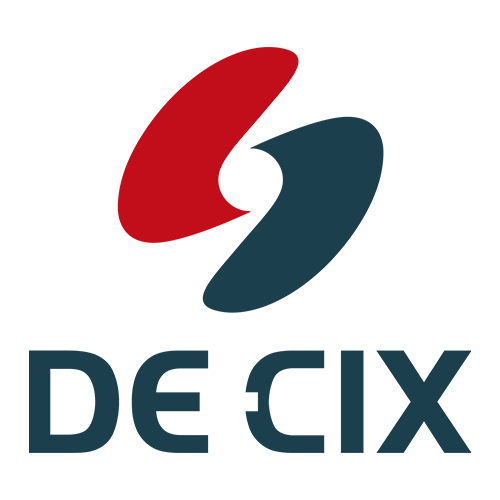The Next-Generation Internet Exchange – DE-CIX Paves the Way for the Immersive Internet
Dr. Thomas King, CTO of DE-CIX, spells out what steps Internet Exchange operators need to take to pioneer the seamless future of the immersive Internet.

© Blue Planet Studio | istockphoto.com
The forthcoming use cases of the immersive Internet pose challenges to infrastructure providers that can only be met with ongoing technological evolution and development. This is also true for Internet Exchanges (IXs), which will be indispensable to meet future connectivity demands. Here, much higher bandwidth and even lower latency are just two of the building blocks. IXs must also achieve greater scalability and functionality with cutting-edge equipment, as well as increasing the levels of automation to make interconnection as easy as possible for connected companies. Beyond this, a densely interconnected geographical presence will best serve the needs of globally operating companies for peering, cloud connectivity, and other interconnection services in the lowest possible latency. All this, while maintaining the highest levels of security and resilience of this critical infrastructure. Dr. Thomas King, CTO of DE-CIX, a pioneer in the interconnection sector, explains what steps IX operators need to take today to set the course for the future.
To enable the forthcoming applications of the immersive Internet, which will demand ultra-low latency data exchange as well as resilience and security, Internet Exchanges must be geographically distributed, fully automated, and highly secure. The following elements contribute to bringing this vision to life:
1. Automation of connectivity
A foundation for the automation of interconnection services is the development of a self-service portal and API to enable customers to manage their connectivity and scale automatically as necessary. The open-source IX-API developed jointly by DE-CIX, LINX, and AMS-IX provides a foundation for such endeavours. In addition to managing connections, customers require access to real-time monitoring, usage statistics for all services, and complete self-service contract management. This includes provisioning and adjusting used bandwidth and services in real time.
While portals and APIs are already a given for some large IX operators, there remains a need for further features to enable monitoring and statistics information, and alerts regarding traffic anomalies. Interconnection services and access ports also need to be fully manageable by users in the IX operator’s portal. At the same time, customers should also be able to integrate computer-readable maintenance messages into their automation tool chains. IX operators can simplify maintenance for customers even further with the implementation of session culling.
2. Redundancy for high resilience
Redundant deployment of hardware across multiple locations is essential to ensure the highest level of resilience and thus security against outages. A high-performance interconnection platform should be accessible via many different, geographically distributed data centers, which – together with the redundant, in-house core and edge network infrastructure – ensures high resilience in the event of local disruptions. IX operators can therefore strategically use expansion to new locations within and between metro areas to make their entire operations more resilient. The interconnection of new sites and markets with the existing ecosystem of IXs further increases the redundancy and availability of the entire infrastructure, as well as the reach of interconnection services.
3. Next-generation hardware
Being able to meet the reliability requirements of critical use cases in the future means that the hardware used in IXs must also be further developed to make it even more secure. IX operators should engage in a continuous process of upgrading equipment in all locations to the latest versions. Each upgrade unlocks new functionalities, greater capacity, increased reliability, and a significant reduction in power consumption
For example, together with the IX operators LINX, AMS-IX, and BCIX, DE-CIX is currently involved in an initiative to upgrade the optical transceivers at its IXs to the newest generation 100G LR-1 technology.
While the existing 100G LR-4 uses four lasers, each carrying a signal of 25 Gbps, the new 100G LR technology uses only a single laser and uses pulse amplitude modulation (PAM4) to transmit data at 100 Gbps. The reduction in complexity of the transceiver design of 100G LR technology will result in power savings as well as better transceiver pricing. These advances not only provide advantages in the short to mid-term, but will also unlock new transceiver form factors that open up the potential for even greater performance and efficiency improvements in the future.
4. Scalability
In the future, high performance interconnection platforms will be needed, with not just 400 GE connections, but 800 GE and Terabit Ethernet (TE) connections (after two decades of GE) to serve the growing bandwidth that new immersive applications will bring. In 2023, 800 GE access has become available for the first time at an IX, with DE-CIX Frankfurt, in Germany, leading the way.
The hardware deployed at IXs needs to be scalable both in terms of total bandwidth and port density to meet the size requirements of each location. This means that the hardware needs to scale from small to large IXs, both in terms of the number of ports per line card and how many line cards fit into a chassis. This scalability also applies to the port sizes that can be accommodated by each device. Because even a customer at a smaller IX may require a 400 GE connection, whereas even a very large device must still be able to support 1 GE customers. Therefore, scalability and interoperability must be approached across multiple dimensions.
The hardware deployed at IXs needs to be scalable both in terms of total bandwidth and port density to meet the size requirements of each location. This means that the hardware needs to scale from small to large IXs, both in terms of the number of ports per line card and how many line cards fit into a chassis.
This scalability also applies to the port sizes that can be accommodated by each device. Because even a customer at a smaller IX may require a 400 GE connection, whereas even a very large device must still be able to support 1 GE customers. Therefore, scalability and interoperability must be approached across multiple dimensions.
5. Enterprise segment drives development of interconnection services
The need for more specialized interconnection services customized to customer needs continues to grow. One central focus for IX operators will, of course, need to be cloud connectivity, and developing the capacity to offer low-latency cloud-to-cloud communication. For example, a cloud router service provides high performance, direct and private data exchange between different cloud environments, with improved application performance through lower latency, as well as increased security and protection against cyber attacks. Beyond this, automation, the provision of monitoring and statistics tools, APIs, and a self-service portal are all essential ingredients for enabling the enterprise segment simplified access to and management of interconnection services.
Conclusion
As products and services become increasingly digital and our economies ever more dependent on data exchange, high-performance, resilient, and secure interconnection is becoming an increasingly relevant economic success factor. Therefore, the next generation of infrastructure must be designed and built today. At DE-CIX, we are already well on the way: with a top-notch R&D team, with technical teams contributing to the newest standards and best practices, and with excellent collaboration with other IX operators and our trusted hardware suppliers, we are designing and building the Internet Exchange of the future. So that we can be ready for the next generations of content, products, and applications.
Dr. Thomas King has been Chief Technology Officer (CTO) at DE-CIX since 2018, and a Member of the DE-CIX Group AG Board since 2022. Before this, King was Chief Innovation Officer (CIO) at DE-CIX, starting in 2016. He has been instrumental in his role at keeping DE-CIX at the forefront of technological development of Internet Exchanges, establishing DE-CIX as a neutral Cloud Exchange, pushing the boundaries of what is possible in terms of high-bandwidth access technology and security solutions for IX platforms, and trailblazing the automation of IX services with the implementation of patch robots, the development of the DE-CIX API, and overseeing the DE-CIX self-service customer portal. Thomas King has also overseen the technical implementation of the international expansion in markets spanning from North America to Europe, the Middle East, India, Southeast Asia and most recently Africa.





